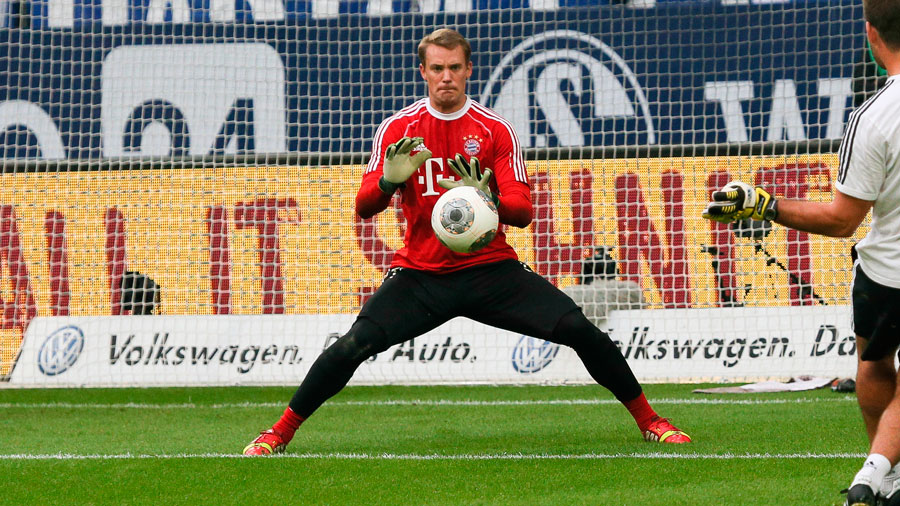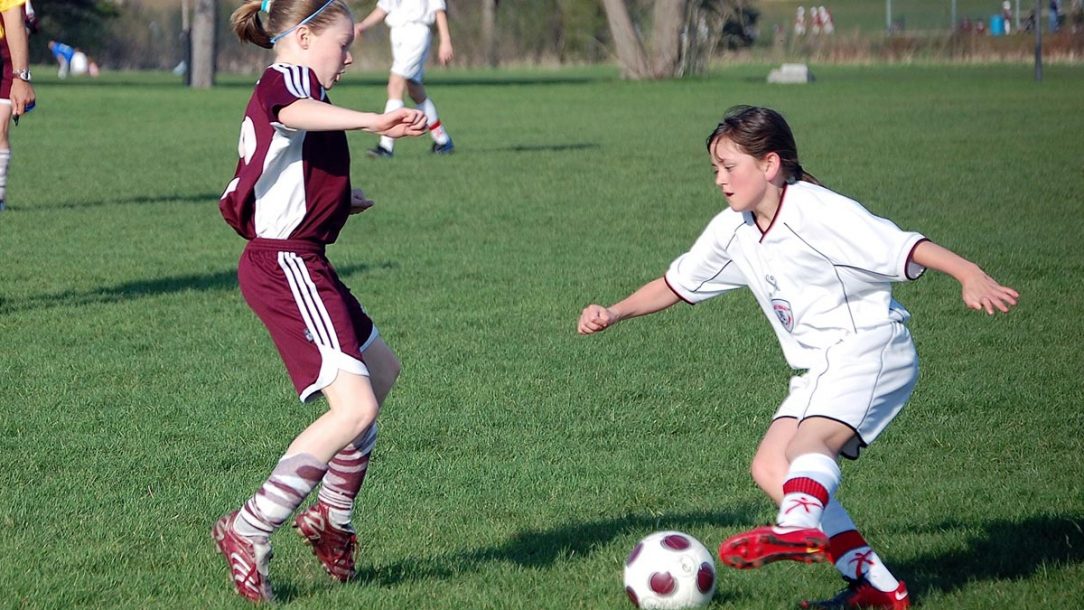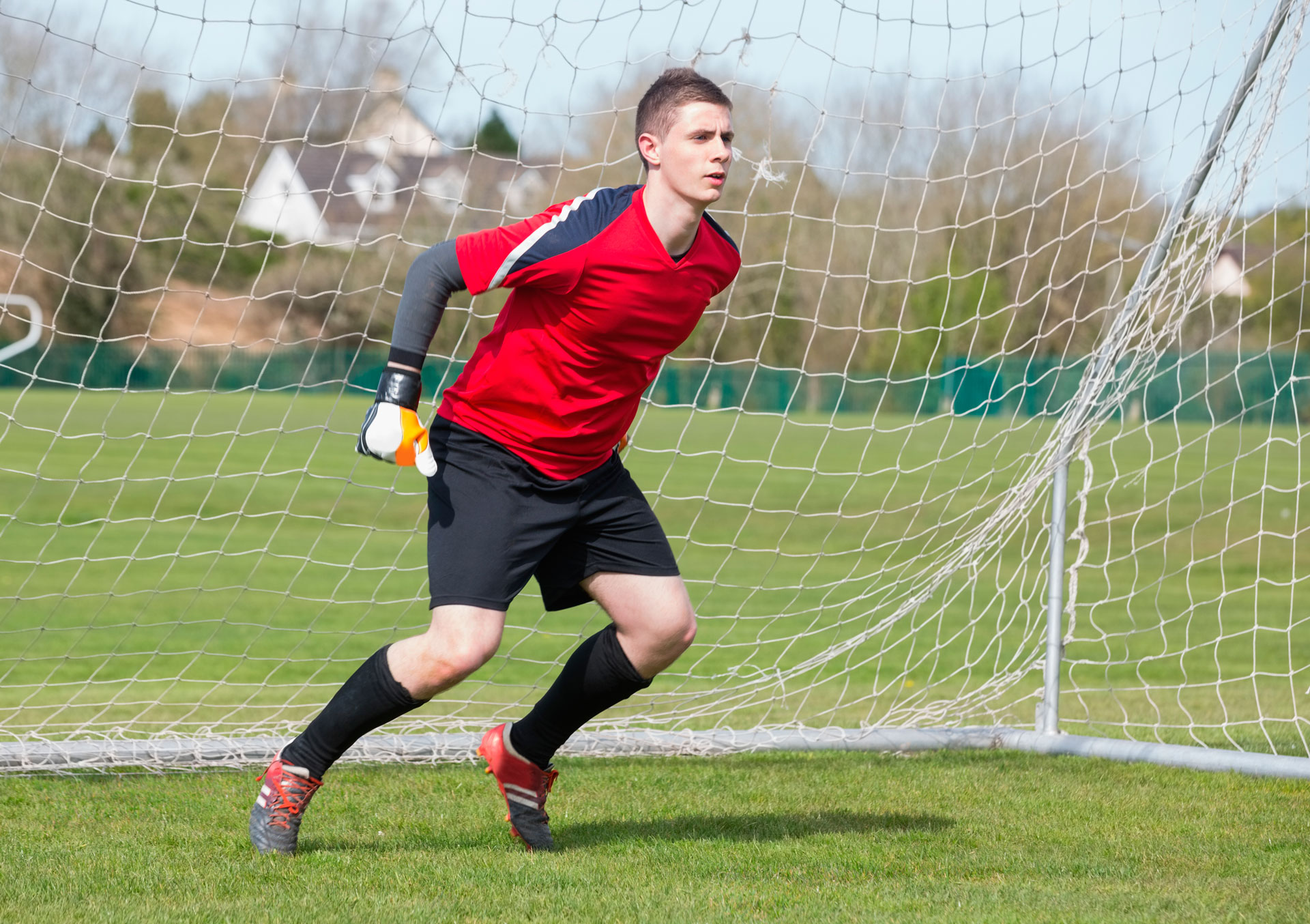The majority of football players and coaches have heard the phrase “up on your toes” at some point. But what coaches mean when they use this phrase versus what players think it means are two different things. So what do the coaches mean when they use this phrase?
Just some of the meanings I have encountered in my time are as follows:
- Some coaches use the term as a wake-up call, to urge players to focus on the game and get ready to act.
- Some coaches use it to remind players not to put too much weight on their heels.
- A third, and large, group of coaches actually do believe that players should work on their toes.
But is it appropriate to STAND or WORK on your toes?
What does coaches mean when they use the phrase “up on your toes”?
Standing on Your Toes
Throughout the years, many goalkeepers have repeatedly trained under the advice that they should adopt a relatively narrow leg position, shoulder width distance, standing on their toes. The justification for this was that it is important for goalies to have tension in their muscles when a shot comes hurtling toward them because this would allow them to react quickly and efficiently.
The same argument was also used when players were taught to be on their toes when engaging in 1v1 defensive situations.
Is it appropriate to STAND or WORK on your toes?
Goalkeepers who stand on their toes encounter some real challenges.
However, goalkeepers who stand on their toes encounter some real challenges. Why?
- The balance they achieve is not particularly good, largely because of the narrow leg position. In this position, the torso comes forward when the gravity is lowered, and this puts the goalie at a disadvantage when he or she needs to move sideways.
- Power development is not particularly good. Much of the power comes from your leg muscles. However, you cannot fully engage these muscles when you are standing on your toes.
- Sideways footwork becomes less effective – not least because of a short first step.
I think this technique is impractical. It has clear limitations and challenges. Fortunately, you can avoid these challenges by placing your body in a different way; I’ll get to that shortly.
Developments on LFT quality have taken place in practice. Keepers are a prime example. The current trend in international football is for goalkeepers to assume a wider leg position. Manuel Neuer is a good example of a player who employs this technique.
Fortunately, you can avoid these challenges by placing your body in a different way.

Photo: Fingerhut/Shutterstock.com
The current trend in international football is for goalkeepers to assume a wider leg position.
Is it advantageous to WORK on your toes?
This question can lead to misunderstandings and disagreements because it depends on what the individual thinks the term means. To cut a long story short: the same principles that impact the goalkeeper apply whether you are stationary or moving, and they also apply to all other defensive positions.
It is the LFT quality that is of the most importance. The quality of your LFT position plays a central role in what you can do and will make or break your performance in those decisive moments.
The same principles that impact the goalkeeper apply whether you are stationary or moving.
Why is it not convenient to work on your toes?
Working on your toes is inefficient because the working conditions are inadequate:
- You will have poor balance because the foot position is parallel and unstable. It is easy to lose your balance forwards or backwards.
- The quality of your footwork, in general, will be reduced, especially the crossover step, because the “pelvis is locked” (you will have little motion in the hip).
- Turnings are more difficult and take longer when the foot is parallel because the pelvis is locked (again, this is due to the minimal motion of the hip).
Working on your toes is inefficient because the working conditions are inadequate.
So, if working on your toes is so ineffective, what is the ideal technique?
THESE THEMES, ALONG WITH 10 OTHER ARTICLES, YOU WILL FIND IN OUR BOOK:
“The Ultimate Guide to Football Defence
– Unique and Fundamental Knowledge of Defence Skills”.



